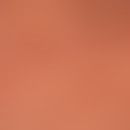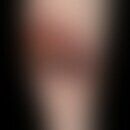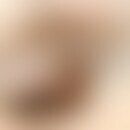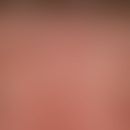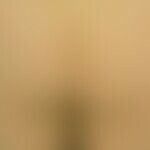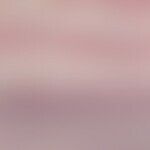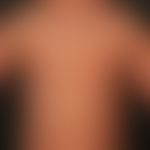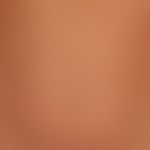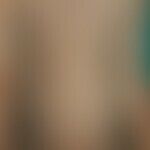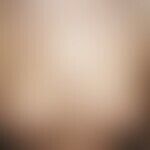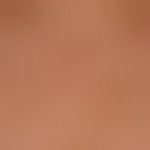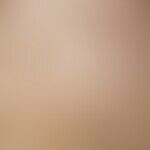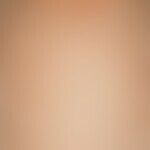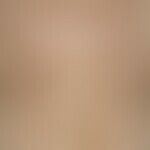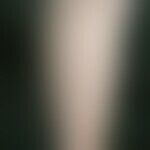Synonym(s)
HistoryThis section has been translated automatically.
DefinitionThis section has been translated automatically.
Most common ichthyosis with varying degrees of cornification disorder with autosomal (semi-)dominant inheritance of a filaggrin mutation. To date, >40 mutaions have been detected in the filaggrin gene(FLG gene), with mutations differing between the European and Asian populations (Osawa R et al. 2011). 2/3 of affected individuals have 2 filaggrin mutations and show a severe course. 1/3 of affected individuals have only 1 filaggrin mutation with a rather mild clinical course of the disease. The skin symptoms become clinically manifest only at the age of 4-6 months.
You might also be interested in
Occurrence/EpidemiologyThis section has been translated automatically.
Incidence: 1/200-400 children. Data from northern England showed a prevalence of 1:100.
EtiopathogenesisThis section has been translated automatically.
Autosomal-dominantly inherited mutation in the filaggrin gene (FLG gene; gene locus: 1q21-22) with consecutive reduced or absent expression of filaggrin and profilaggrin in patients with pronounced ichthyosis vulgaris. Filaggrin is a structural protein that cross-links the disulfide bridges between the keratinocytes in the skin barrier and thus has a reinforcing function. Due to a mutation, this function can no longer be guaranteed and the skin is more susceptible to mechanical stimuli. A defect in the post-transcriptional control of profilaggrin expression is suspected (null mutations of the filaggrin gene are also detected in patients with atopic eczema ). 50% of patients with ichthyosis vulgaris develop atopic dermatitis; 20% develop other atopic manifestations such as allergic rhinitis and bronchial asthma.
ManifestationThis section has been translated automatically.
Occurring in the first (after the 3rd month of life) to second year of life.
LocalizationThis section has been translated automatically.
ClinicThis section has been translated automatically.
Firmly adherent, usually light grey, more rarely also brownish-blackish scaling on sebostatic skin. Sweat production is reduced. Overall, the skin lesions in autosomal dominant ichthyosis vulgaris are extremely variable. They can be minimally pronounced so that the disease is hardly recognizable. If more pronounced, the scales are larger, thicker, sometimes blackish (Ichthyosis nigricans). The skin then appears fielded.
Tpical is a hyperlinear palm line pattern (see below eczema, atopic) as well as the recess of the joint bends.
An additional feature are follicular keratoses (especially on the upper arm extensor sides and the lateral thigh areas (in up to 75% of cases). The subjective complaints are minor; occasionally slight itching.
Combinations (up to 50%) with diseases of the atopic form are frequent. There is also an increased tendency to contact sensitization.
HistologyThis section has been translated automatically.
Retention hyperkeratosis with largely absent stratum granulosum. The epidermis may be slightly widened but also narrowed. Interfollicular, partially follicular orthohyperkeratosis. Electron microscopy: Defect of keratohyalin formation.
Differential diagnosisThis section has been translated automatically.
Ichthyosis vulgaris, X-linked recessive; pseudoichthyosis ( ichthyosis acquisita), atopic dermatitis.
General therapyThis section has been translated automatically.
- Climatotherapy: Good to excellent results can be achieved with thalassotherapeutic treatments. Many patients bathe daily and use sponges and soft brushes to brush the skin.
- Nutrition: No special modalities are recommended.
- Psychosomatic therapy approaches: If necessary in addition to somatic therapy.
External therapyThis section has been translated automatically.
Remark. The regular caring, hydrating and, depending on the degree of development, also keratolytic external therapy is in the foreground in ichthyosis vulgaris!
- Hydration/keratolysis: The best results are usually achieved by using 5-10% urea (e.g. R102, R113 ) and alpha-hydroxy acids (e.g. lactic acid R102, R113, glycolic acid, citric acid). Good effects are also obtained with saline additives (e.g. R146 or ointments containing propylene glycol. 2-5% salicylic acid R227 can be used especially in hyperkeratotic areas. External retinoids are usually less effective R256, the concentration should be chosen lower (0.025%) than in commercially available acne preparations (0.05%). The correct treatment must be tested out on a case-by-case basis.
- Skin care/refatting: As little defatting of the skin as possible! Sparing use of soaps or syndets. Do not use liquid soaps (risk of excessive use). Less degreasing is a mild cleansing of the body skin with hydrophilic body oils. This achieves a sufficient cleansing effect while at the same time re-greasing the body skin. Instead of hydrophilic oils, O/W emulsions can also be used (e.g. Abitima body lotion, Lipoderm, Sebamed lotion). Briefly shower skin, apply emulsion to damp skin and spread.
Baths: 2-3 times/week full bath (10-20 min.) with 1% common salt (1 kg per 1 full bath). Alternatively, baths with oil or bran additives (see below). - In case of eczematized or irritated skin condition: baths with oil or bran additives (e.g. oil baths as"Cleopatra bath" or bran baths). The baths serve as cleansing baths to remove ointment residues, scales and bacteria from the skin surface. It is useful to familiarize patients in detail with these therapeutic modalities.
Notice.
The Cleopatra bath is easy to use and inexpensive: 1 cup of milk with 1 tablespoon of olive oil to 1 bathtub filling! There are numerous ready-to-use preparations available for oil baths (e.g. Balneum Hermal, Oil Bath Cordes, Linola fat oil bath, etc.). - Kneipp books recommend milk-whey or chamomile oil baths.
Radiation therapyThis section has been translated automatically.
Internal therapyThis section has been translated automatically.
Progression/forecastThis section has been translated automatically.
Note(s)This section has been translated automatically.
50-60% of patients simultaneously suffer from the signs of atopic dermatitis or allergic rhinkonjunctivitis.
LiteratureThis section has been translated automatically.
- Cuevas-Covarrubias SA et al (1999) Ichthyosis vulgaris and X-linked ichthyosis: simultaneous segregation in the same family. Acta Derm Venereol 79: 494-495
- DiGiovanna JJ, Robinson-Bostom L (2003) Ichthyosis: etiology, diagnosis, and management. Am J Clin Dermatol 4: 81-95.
- Hofmann B, Stege H, Ruzicka T (1999) Effect of topical tazarotene in the treatment of congenital ichthyoses. Br J Dermatol 141: 642-646.
- Lorry AC (1777) Tractatus de morbis cutaneis. P. Guillelmum Cavelier, Paris, pp. 167-184.
- Osawa R et al (2011) Filaggrin gene defects and the risk of developing allergic disorders. Allergol Int 60:1-9.
- Oji V (2010) Clinical presentation and etiology of ichthyoses. Overview of the new nomenclature and classification. Dermatologist 61: 891-902
- Okulicz JF, Schwartz RA (2003) Hereditary and acquired ichthyosis vulgaris. Int J Dermatol 42: 95-98.
- Willan R (1808) Ichthyosis. In: On cutaneous disease. Barnard, London, Vol.1, Chapter 4.
Incoming links (38)
Autosomal recessive ichthyosis lamellosa with transglutaminase deficiency; Bran extract; Brown falco-landthaler syndrome; Cleopatra bath; Comel-netherton syndrome; Corneal clouding; Deciduousenthal syndrome; Dystrophia myotonica; Eccema in ichthyotico; Epidermis; ... Show allOutgoing links (17)
Atopic dermatitis (overview); Cleopatra bath; Climatotherapy; Filaggrine; FLG Gene; Hydrous urea-wool wax alcohol ointment 5 or 10% (nrf 11.74.); Ichthyosis acquisita (pseudoichthyosis); Ichthyosis x-linked recessive; Orthohyperkeratosis; Salicylic acid ointment (w/o); ... Show allDisclaimer
Please ask your physician for a reliable diagnosis. This website is only meant as a reference.

